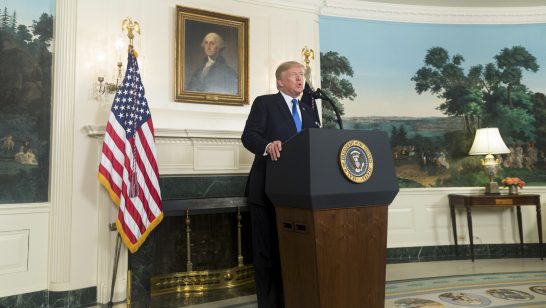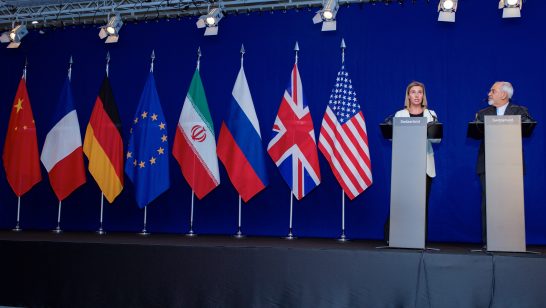
On 13-14 February 2019, the US and Poland will host a ministerial meeting on the Middle East. The organizers say that no single issue or country will dominate discussions, yet Iran-related questions are expected. This backgrounder offers important information on critical issues relevant to the ministerial and other upcoming events. The analysis draws on materials shared by the ELN’s Iran expert “tiger team”, some of whom have recently returned from high-level meetings in Tehran, and external sources.
INSTEX Messaging: How to Make the Most of the SPV
- The Special Purpose Vehicle (SPV) will only buy the JCPOA time if it can be readily understood and is reliable. Simply put, the SPV can be described as a trade intermediary, and INSTEX is the European company created for facilitating sanctions compliant trade with Iran. INSTEX will help act as a go-between for European exporters/Iranian importers and vice versa. The company will oversee a ledger of trade, coordinating payments so that the need to transfer funds between financial systems is removed.
- Manage expectations and keep each other accountable. While INSTEX will take months to become operational, both European and Iranian officials must keep their publics updated on the process while holding each other accountable for follow-through. Iran’s tepid response to INSTEX was rooted in caution due to the amount of time it took to develop and its limited scope. To speed up progress, Europeans should offer Iran continuous technical assistance to establish INSTEX’s Iranian counterpart.
- The SPV is an exercise of risk-sharing, but confidence building is also needed. INSTEX acts as an E3-backed shield to address companies’ concerns over potential punitive actions despite due diligence. To attract support from potential partners, there should be transparency on the mechanism’s functions and further clarity should be sought from the US Treasury Department on secondary sanctions.
- The JCPOA and SPV will likely become increasingly politicized in Iran. The 2020 election of the Majlis (Iranian parliament) means unless the JCPOA starts delivering soon, defending the deal will become a losing electoral card. According to recent findings by IranPoll, support for the JCPOA in Iran has fallen to 51%. Thus, Europeans must recognise that INSTEX is not a sufficient defence of the deal and must reinvigorate dialogue on cross-sectoral engagement with Iran.
Read Riccardo Alcaro’s recent trip report from high-level meetings in Tehran
“Both Iran and the E3 should expect a teething period while the mechanism adjusts to best serve commercial actors. For European treasury managers and compliance officers tasked with finding workable financial channels with Iran, complexity has long been the norm. If the INSTEX channel proves reliable, companies are likely to use its services.
The E3 should undertake the necessary technical arrangements to operationalise INSTEX as quickly as possible. The new managing director of INSTEX will need to tour Europe to meet business executives and policymakers. They will need to engage in extensive outreach with European operators to persuade them to use the SPV – and, more importantly, with European banks that are instrumental to it – by settling accounts between European companies. The European External Action Service should be closely involved in this coordination effort across Europe.”
– Ellie Geranmayeh & Esfandyar Batmanghelidj
Read the full explainer at ECFR + listen to an expert-led INSTEX press call
Implementing the JCPOA is a Binary Choice: Zero Grey Area
- The International Crisis Group released a progress report on the JCPOA before the agreement entered its fourth year of implementation. While none of the JCPOA parties are fully satisfied with the deal, actions can still be taken to salvage the agreement and avoid regional escalation.
- Europeans must firmly hold that implementing the JCPOA and upholding UN Security Council Resolution 2231 are binary choices. Some in Iran argue for a “less-for-less” approach: reduced restrictions on the nuclear program because of the lack of economic benefits. However, the other JCPOA parties should continue to maintain that this is unacceptable. Maximilian Hoell reviews choices for Iran at the ELN.
- As Tehran’s economic patience wanes, it may try to exploit gaps in the nuclear deal to pressure the West. However, nuclear brinkmanship would be a double-edged sword for Tehran. Omer Carmi outlines Iran’s potential next nuclear moves and their consequences at the Washington Institute for Near East Policy.
- Iranian behaviour must be demystified so that their actions are responded to with the benefit of context and do not result in alarmist — and inaccurate — reporting. For example, recent misreporting of Iranian nuclear fuel fabrication as uranium enrichment is clarified at Al-Monitor.
Ballistic Missiles: Seeking a Regional Solution
- Domestic and foreign pressures may be driving Iran to embrace new operations and tactics for a broader offensive strategy if another war erupts in the Middle East. Tehran is expected to show further signs of concern over its defence posture, likely by staging military drills and unveiling offensive equipment and capabilities. This includes more-accurate, longer-range weapons like the Dezful compact ballistic missile. Farzin Nadimi comments at the Washington Institute for Near East Policy.
- Iranian conventional medium-range missiles can become a basis for strategic stability in the Middle East as well as a reassurance to those who doubt the sincerity of Iran’s pledge never to acquire nuclear weapons. Peter Jenkins comments at LobeLog that Iranian medium-range missiles should not be singled out as uniquely destabilising. Saudi and Israeli missiles, as well as Israeli nuclear weapons, also affect stability in the region.
- If Europe wants Iran to be forthcoming about its ballistic missiles and regional policies, it must establish trust through pragmatic dialogue, not coercion. Policy-makers must first identify, through dialogue, which missiles the Iranians may be willing to scale back and which efforts represent serious, long-term, and strategic investments for Iranian deterrence. Riccardo Alcaro comments at Istituto Affari Internazionali.
- The US and its allies should be careful not to overstate the risks posed by Iran’s latest attempts at satellite launches. Michael Elleman provides a detailed analysis at IISS of the technology behind the launch and the programmes upon which policymakers should instead focus their attention, namely much shorter-range Iranian missiles already being used by proxy groups like Iranian-backed rebels in Yemen.
- Although the current political context is not highly conducive to diplomatic initiatives, the next step might be to try to codify Iran’s self-imposed 2000km missile limit into an agreement involving reciprocal measures, such as civil and technical cooperation on Iran’s space program. Tytti Erästö comments at SIPRI.
Subscribe to the ELN’s daily/weekly Iran briefs
If you would like to get in touch with the ELN in regards to Iran-related work, contact [email protected]



